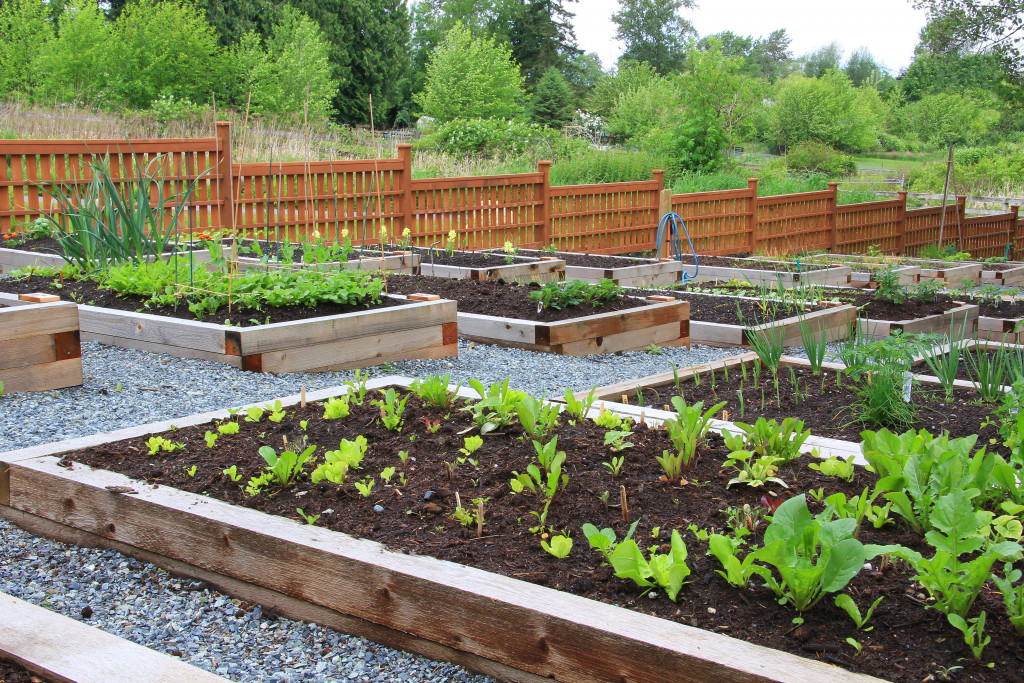Sustainable food production is critical for many reasons. It helps us to be more environmentally responsible while allowing us to provide healthy food for our families.
But how do you grow sustainable food, especially if you have a limited area and don’t know much about gardening? Here are eight tips to begin with:
1. Consider Hydroponics
Hydroponics is the process of growing plants in a water-based, nutrient-rich solution, allowing you to harvest food even when you don’t have the usual resources such as soil, space, and even natural sunlight.
These systems are versatile that you can choose from many styles and sizes depending on your needs. For example, if the land is limited, you can invest in container farms for sale to grow crops vertically. The setup can already include a temperature-controlled HVAC and full-spectrum lighting, producing nutrient-dense crops.
2. Choose the Right Crops
Not all crops are created equal, and some will be more sustainable to grow than others. Consider the climate in your area, hardiness zone, and what types of crops can thrive there.
You’ll also want to consider how much work you’re willing to put into tending the garden. If you don’t have a lot of time, choose plants that don’t require a lot of maintenance.
Also, think about how much water you’ll need to grow the crops and your available resources. Popular, sustainable food crops include carrots, tomatoes, onions, leafy greens, and herbs.
Suppose you have space for larger structures such as a greenhouse or hoop house (a semi-circular greenhouse). In that case, you can also grow crops heat-loving vegetables more quickly like beans, okras, and peppers while protecting them from harmful elements and insects.
3. Don’t Use Pesticides on Your Crops

One way to reduce your reliance on pesticides and other harmful chemicals is to choose suitable crops. Pests are often attracted to specific types of plants, so you’ll naturally reduce their population by planting varieties that they aren’t interested in.
Another option is to use companion planting, growing different plants together to repel pests or provide other benefits. For example, planting marigolds near tomatoes can help to repel harmful insects.
If you must use pesticides, opt for organic versions that are less harmful to your family and environment.
4. Use Recycled Materials in Your Garden
You can reduce your environmental impact by using recycled materials in your garden. For example, use old tires to create a raised bed or an old pallet to create a planter.
You can also use recycled glass or plastic to create beautiful garden accents. Not only will you be reducing waste, but you’ll also add some beauty to your garden. Just be sure that any recycled materials you choose are safe for gardening and won’t leach harmful chemicals into the soil.
You can also use recycled materials to help with water conservation. For example, you can place a rain barrel under your gutter downspout to collect rainwater to use in your garden.
Some people have even used the bottoms of soda bottles or milk jugs as mini-greenhouses for their seedlings, allowing them to sprout and grow before they’re transplanted into the ground.
5. Do Regenerative Agriculture Practices
Regenerative agriculture is a type of land management that helps restore and improve the health of the soil. It’s based on the idea of using nature as a model, and it can be used in both conventional and organic farming systems.
Some standard regenerative agriculture practices include:
- Cover Crops: Planting cover crops helps prevent erosion, improve soil health, and add organic matter to the soil.
- No-Till Farming: This practice involves leaving the crop residue on the surface after harvest instead of tilling it into the soil. This helps to protect the soil from wind and water erosion while also providing a home for beneficial insects and organisms.
- Organic Matter: Adding organic matter, such as compost or manure, to the soil helps to improve its structure and health.
- Aerobic Decomposition: This practice involves keeping the soil loose and well-aerated so that aerobic microorganisms can thrive. It’s done by using techniques like mulching and crop rotation.
6. Use Food Scraps to Grow Plants
Instead of throwing out your food scraps, use them to grow more plants. For example, you can plant pineapple tops and avocado seeds in water until they sprout roots.
Then, transplant them into the soil, where they will continue to grow. You can also plant potato eyes or citrus seeds straight into the ground for more instant gratification.
You can also use the tops of onions, carrots, or celery similarly by placing them in water until they sprout new green shoots. You can then add these plants to your salad for some extra crunch.
You can also compost your food scraps to create nutrient-rich soil for your garden. Just be sure to keep it moist and aerated so that the decomposing process can occur properly.
Composting is a great way to reduce your waste while also helping your garden thrive.
There are many ways to make your garden more sustainable, and these are just a few of the most popular options. Using some or all of these practices can help reduce your environmental impact while also providing food for your family.
